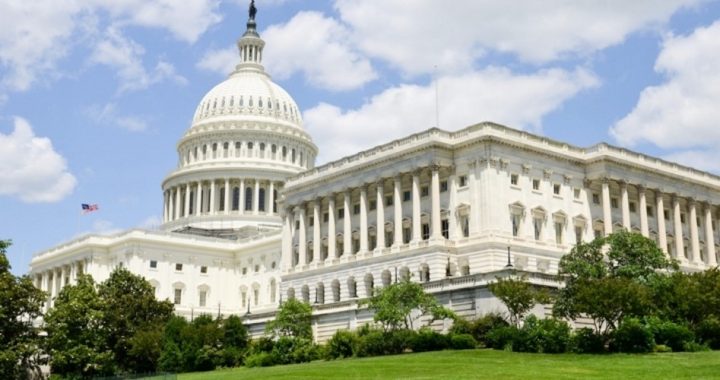
Battling over a transportation bill that now also addresses student-loan interest rates, congressional lawmakers are scrambling to appease their constituents in a legislative boondoggle littered with election-year politics. Aimed for final passage this week, the legislation would — among a slew of other provisions — extend federal highway funding, prevent new student-loan interest rates from doubling, and renew and revise federal flood insurance.
If Congress does not reach a decision by Saturday, the federal government’s ability to administer road, mass transit, and other transportation-related programs will be vanquished, along with its authority to impose the gasoline taxes that subsidize most of those programs.
Congressional leaders in both the House and Senate reached a deal Wednesday on the transportation and student loan provisions of the legislation, deciding that combining them into one bill will help expedite the legislative process. In terms of the highway portion of the bill, Republicans folded on a provision that would force federal approval of the Keystone XL oil pipeline, and another that would prohibit the government from imposing regulations on toxic ash emitted by coal-fired power plants.
Meanwhile, Democrats offered a compromise that would grant states the authority to opt out of spending funds on nonroad-related projects, such as bike and pedestrian paths. House Speaker John Boehner (R-Ohio) said Wednesday morning that “it is clear that there are significant reforms in this bill, which will reduce the number of programs funded out of the highway bill, streamline the regulatory process and allow us to focus our highway dollars on fixing America’s highways, not planting more flowers around the country.”
Naturally, the sensitive subject of government-subsidized student loans — an especially tense discussion during a down economy — has prompted lawmakers on both sides of the aisle to advocate a measure to prevent interest on Stafford loans from doubling to 6.8 percent. To curtail rising government costs, the increase was approved five years ago, but few lawmakers are willing to risk losing November votes from the 7.4 million students — along with their parents — who are projected to receive loans during the next 12 months.
To pay for the $6-billion price tag, lawmakers are proposing a raise in premiums for federal pension insurance and a six-year cap for loans on part-time students attending four-year schools. “Sen. [Harry] Reid and I have an understanding that we think will be acceptable to the House. That may or may not be coupled with the highway proposal over in the House,” said Senate Republican Leader Mitch McConnell (R-Ky.).
The student-loan interest debacle has even lured in President Obama and presidential candidate Mitt Romney. The President has been canvassing across states accusing Republicans of stalling the vote. However, while some GOP lawmakers have rejected the rate freeze, Romney and many GOP congressional leaders have hailed it.
“We’re pleased that the Senate has reached a deal to keep rates low and continue offering hard-working students a fair shot at an affordable education,” the White House affirmed in a statement this week. “We hope that Congress will complete the legislative process and send a bill to the president as soon as possible.”
In the end, though, the question lies with the efficacy of federal-subsidized student loans and whether the federal government even has the constitutional authority to grant them. The fact is government subsidization in education wasn’t always the norm, and according to many economists, Stafford loans have only exacerbated the progressive rise in higher-education costs, as they curb the pricing power of consumerism.
“Just think of all this willingness to want to help every student get a college education,” asserts Rep. Ron Paul (R-Texas), who graduated from Gettysburg College in Pennsylvania, a school with an annual tuition cost now exceeding $42,000 a year. “I went to school when we had none of those. I could work my way through college and medical school because it wasn’t so expensive.”
Economist Thomas Woods, a senior fellow of the Ludwig von Mises Institute, explains in his book Rollback that such government interference is unconstitutional, and that the root of the problem lies with student loans subsidized by the federal government:
Of course, it is the subsidies themselves that push tuition costs ever higher. Here’s the obvious point everyone pretends not to realize: colleges know the students have access to low-interest loans courtesy of government. Aware that prospective students enjoy artificially increased purchasing power, college administrations raise tuition (and cut back their own aid programs) accordingly. When tuition thus continues to rise, as any fool could predict, we hear huzzahs for the government — for however could students pay this high tuition without government assistance? It is the classic case, as Harry Browne said, of the government breaking your leg, handing you a crutch, and saying, “See? Without me you couldn’t walk.”
Of course, considering the November elections are only months away, the big picture is not readily acknowledged by most lawmakers, including the two presidential candidates. As usual, political expediency triumphs over statesmanship. Consequently, the legislation now toiling in Congress is being propagated as a bill that will safeguard public-sector jobs and keep interest rates low for students pursuing higher education.
In effect, both parties have compromised on the bill, and neither side is fully content with the result. But election-year politics have seemingly trumped any motivation to remain poised on some of the more polarizing issues of the day.
Photo: Capitol Building in Washington DC via Shutterstock



